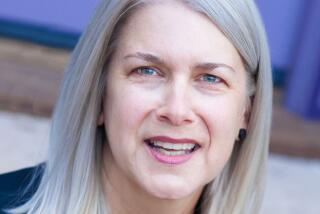Discoveries
The Long-Shining Waters by Danielle Sosin (Milkweed Editions: 288 pp.,
$24.) You don’t see writing like this often, so infused with an intimate relationship to nature, certainly not in debut novels. It may be that with nature shrinking away from us, young writers don’t marinate in the sounds, smells, colors and emotions that were once readily available. Whatever the reason, Sosin writes about Lake Superior as if it were a character, a parent, a lover, an enemy. Three stories are linked between the covers of “The Long-Shining Waters”: Grey Rabbit, an Ojibwe woman living on the shores of Lake Superior tries to protect her children from starvation, even as her dream life warns that they will die; Gunnar, a Norwegian fisherman living on the lake in 1902 with his beloved wife, Berit, is haunted by the discovery of a dead man in the lake; and Nora, a middle-aged woman whose business on the shores of the lake burns down in 2000 takes a journey around its perimeter. A single thread joins them through history; their stories link in the novel’s subconscious like a fable. “Superior should be comprehensible,” Gunnar thinks as he reluctantly leaves the body in the lake so as not to frighten Berit. “It’s not. And that discord is readily felt. The Great Lake is movement at peripheral vision. It is sound at the limit of audible frequency. It is the illusion of the ability to understand.”
And Yet They Were Happy by Helen Phillips (Leapfrog
Press/Massachusetts: 314 pp., $14.95. paper. This constellation of prose-poem pieces resists the kind of categorization required to sell books.
Perhaps it is a kind of Bible — a couple’s Book of Genesis; perhaps it is a catalog of human endeavors. Floods, fights, failures, far-flung families — these are a few of the subjects covered, always from more than one perspective. “I drank from a china cup painted with roses. I sipped tea from a distant continent; and suddenly my parents started to seem real to me.” It’s all vaguely familiar, the “orange lichen growing on tenements,” the benevolence and compassion a narrator shows to Noah, who is forced to leave so many beautiful, mysterious creatures behind in the flood. Adam and Eve, Bob Dylan, Snow White, Jack Kerouac and Anne Frank all make cameos; the reader sits on a carousel horse and watches familiar people and objects whirl by. Helen Phillips uses the simplest objects to create suspense, the merest whisper of plot to make her readers care about these tiny planets.
Mary Chesnut’s Diary by Mary Boykin Chesnut Penguin Classics: 352 pp., $15 paper. Mary Chesnut’s journals, written in the years of the Civil War and the volume she created from them before her death in 1886, have often been called the best record that we have of the rise and fall of the Confederacy.
Her writing is both personal and political; as the wife of a South Carolina senator, Chesnut had access to many political and social figures of the day, from presidents to authors. But she was also a keen observer of servants, field slaves and women whose influence on their husbands’ decisions was felt but rarely acknowledged. The down side of the book is her barely concealed pettiness and her convoluted racism — while she acknowledges the brutality of slavery, her arrogance and snobbery are blinding.Her description of parties is downright cinematic — so precise and detailed is her writing. She is Scarlett O’Hara incarnate, complete with post-Fort Sumter backbone and ridiculous vanity.
Salter Reynolds is a Los Angeles writer.
More to Read
Sign up for our Book Club newsletter
Get the latest news, events and more from the Los Angeles Times Book Club, and help us get L.A. reading and talking.
You may occasionally receive promotional content from the Los Angeles Times.






